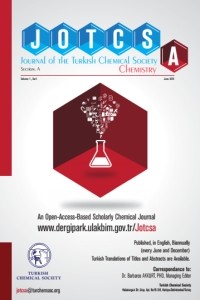Abstract
Polycarbonates (PC) are used in automotive industry due to
high physical and mechanical properties like high impact resistance and
ductility. Polycarbonates are blended with ABS (Acrylonitrile-Butadiene-Styrene)
and ASA (Acrylonitrile-Styrene-Acrylate) terpolymers for interior and exterior
applications of automotive components to achieve good physical and mechanical
properties. Other reason for choosing such alloys for interior applications is
the IZOD impact resistance requirement higher than 40kJ/m2. Recently,
grades of PC/ASA with UV stabilized are developed for non-painted exterior
applications.
The aim of our study is to investigate whether new developed
PC/ASA could be chosen for exterior applications of automotive industry. In
this study, the samples are prepared from injection molding and the weathering
performance of PC/ASA was tested by a weather-o-meter for 1500h at a total of
1890 kJ/m2 at 340nm with a cut-off filter at λ<290nm. The results
are evaluated by FT-IR, DSC, TGA and SEM. It has been observed that UV
degradation of PC/ASA leads to several major changes in its IR spectrum like
broad bands occurred in the hydroxyl region around 3300cm-1, and
carbonyl stretching region increased around 1728 cm-1. The main
degradations were based on photo-oxidation and photo-Fries rearrangement of PC.
In our study, the photo-oxidation was followed by the color shift to yellowing
of the polymer.
References
- 1. Krache R, Debah I. Some Mechanical and Thermal Properties of PC/ABS Blends. Mater Sci Appl. 2011;2(5):404–10.
- 2. Cheng TW, Keskkula H, Paul DR. Property and morphology relationships for ternary blends of polycarbonate, brittle polymers and an impact modifier. Polymer. 1992 Jan 1;33(8):1606–19.
- 3. Liu Y, Li H, Ding X, Pan JZW, Cai R. Effect of the compatibilizers on Polycarbonate (PC)/acrylonitrile-butadiene-styrene (ABS) blend. Am J Mater Res. 2014;1(3):48–52.
- 4. Semba T, Hamada H. Weld Line Strength in PC/ABS Injection Moldings. Int Polym Process. 1999 01;14(4):365–9.
- 5. Kang MS, Kim CK, Lee JW. PC/ASA blends having enhanced interfacial and mechanical properties. Korea Aust Rheol J. 2006 01;18(1):1–8.
- 6. Andrady AL, Searle ND, Crewdson LFE. Wavelength sensitivity of unstabilized and UV stabilized polycarbonate to solar simulated radiation. Polym Degrad Stab. 1992;35(3):235–47.
- 7. Clark DT, Munro HS. Surface and bulk aspects of the natural and artificial photo-ageing of Bisphenol A polycarbonate as revealed by ESCA and difference UV spectroscopy. Polym Degrad Stab. 1984;8(4):195–211.
- 8. Pryde CA. Weathering of Polycarbonates: A Survey of the Variables Involved. In: American Chemical Society, Polymer Preprints, Division of Polymer Chemistry. ACS, Div of Polymer Chemistry; 1984. p. 52–3.
- 9. Rivaton A, Sallet D, Lemaire J. The photo-chemistry of bisphenol-A polycarbonate reconsidered: Part 3—Influence of water on polycarbonate photo-chemistry. Polym Degrad Stab. 1986;14(1):23–40.
- 10. Tjandraatmadja G., Burn L., Jollands M. Evaluation of commercial polycarbonate optical properties after QUV-A radiation—the role of humidity in photodegradation. Polym Degrad Stab. 2002;78(3):435–48.
- 11. Factor A, Chu ML. The rôle of oxygen in the photo-ageing of bisphenol-A polycarbonate. Polym Degrad Stab. 1980 Sep 1;2(3):203–23.
Abstract
References
- 1. Krache R, Debah I. Some Mechanical and Thermal Properties of PC/ABS Blends. Mater Sci Appl. 2011;2(5):404–10.
- 2. Cheng TW, Keskkula H, Paul DR. Property and morphology relationships for ternary blends of polycarbonate, brittle polymers and an impact modifier. Polymer. 1992 Jan 1;33(8):1606–19.
- 3. Liu Y, Li H, Ding X, Pan JZW, Cai R. Effect of the compatibilizers on Polycarbonate (PC)/acrylonitrile-butadiene-styrene (ABS) blend. Am J Mater Res. 2014;1(3):48–52.
- 4. Semba T, Hamada H. Weld Line Strength in PC/ABS Injection Moldings. Int Polym Process. 1999 01;14(4):365–9.
- 5. Kang MS, Kim CK, Lee JW. PC/ASA blends having enhanced interfacial and mechanical properties. Korea Aust Rheol J. 2006 01;18(1):1–8.
- 6. Andrady AL, Searle ND, Crewdson LFE. Wavelength sensitivity of unstabilized and UV stabilized polycarbonate to solar simulated radiation. Polym Degrad Stab. 1992;35(3):235–47.
- 7. Clark DT, Munro HS. Surface and bulk aspects of the natural and artificial photo-ageing of Bisphenol A polycarbonate as revealed by ESCA and difference UV spectroscopy. Polym Degrad Stab. 1984;8(4):195–211.
- 8. Pryde CA. Weathering of Polycarbonates: A Survey of the Variables Involved. In: American Chemical Society, Polymer Preprints, Division of Polymer Chemistry. ACS, Div of Polymer Chemistry; 1984. p. 52–3.
- 9. Rivaton A, Sallet D, Lemaire J. The photo-chemistry of bisphenol-A polycarbonate reconsidered: Part 3—Influence of water on polycarbonate photo-chemistry. Polym Degrad Stab. 1986;14(1):23–40.
- 10. Tjandraatmadja G., Burn L., Jollands M. Evaluation of commercial polycarbonate optical properties after QUV-A radiation—the role of humidity in photodegradation. Polym Degrad Stab. 2002;78(3):435–48.
- 11. Factor A, Chu ML. The rôle of oxygen in the photo-ageing of bisphenol-A polycarbonate. Polym Degrad Stab. 1980 Sep 1;2(3):203–23.
Details
| Subjects | Engineering, Chemical Engineering |
|---|---|
| Journal Section | Research Article |
| Authors | |
| Publication Date | September 1, 2017 |
| Submission Date | January 27, 2017 |
| Acceptance Date | October 19, 2017 |
| Published in Issue | Year 2018 Volume: 5 Issue: 1 |


